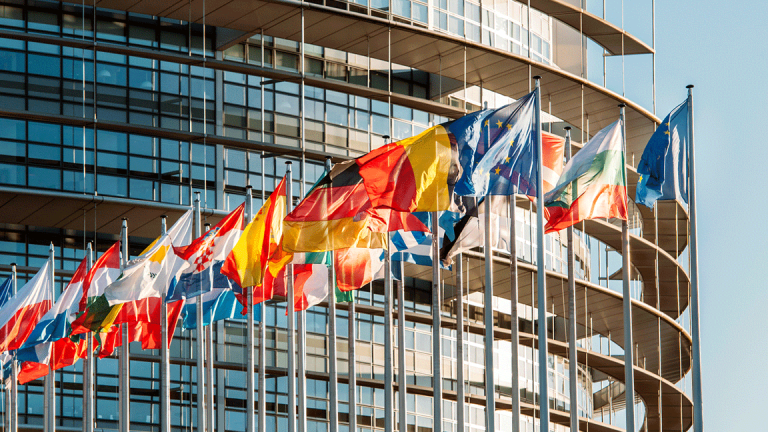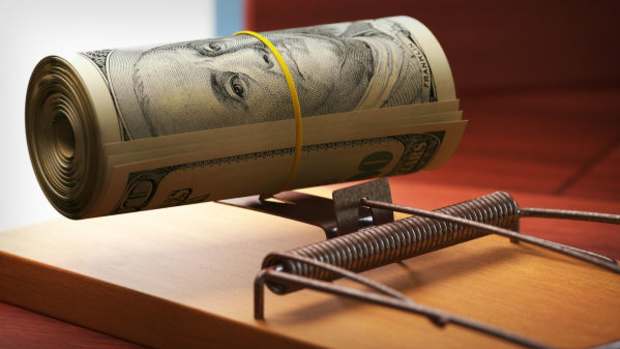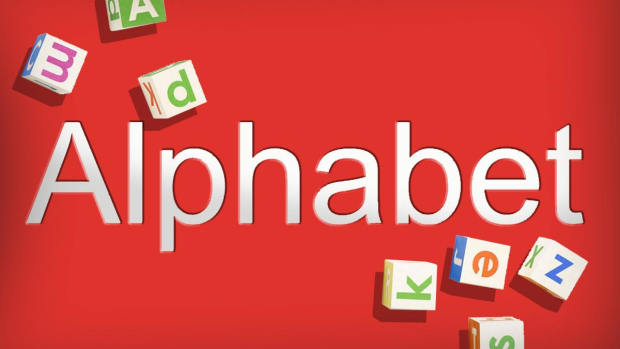
What Is the European Union? Its Purpose, History and How it Looks in 2018
You've likely seen images of that blue and gold-starred flag flying in many of Europe's most powerful countries. You have also probably heard a thing or two about Brexit. But what exactly is the European Union, and how was it formed? And, perhaps more importantly, how has it operated in the past and how does it work today?
What Is the European Union?
According to the European Union's official website, the union's purpose is to promote peace, establish a unified economic and monetary system, promote inclusion and combat discrimination, break down barriers to trade and borders, encourage technological and scientific developments, champion environmental protection, and, among others, promote goals like a competitive global market and social progress.
So, put simply, the European Union is a coalition of 28 (soon to be 27 following Britain's bow out from the union in 2019) European countries, designed to tear down trade, economic and social barriers and promote flourishing in these areas.
Established in 1993, the European Union's headquarters are currently located in Brussels, Belgium.
In the post-World War II world, the European Union has sought to bolster the individual and collective economic and social well being of the countries involved, as well as establish a cohesive global marketplace that promotes trade and other social values.
Still, the European Union functions by a three-pronged governing system including a council, a parliament, and a commission, and uses a common currency called the euro.
European Union History
But, how did the European Union form?
Despite not being officially formed until 1993, the European Union's foundations actually reach further back to 1957, when the European Economic Community was established. The EEC was formed out of a previous group called the European Coal and Steel Community - which had its own start in 1951.
Among other things, the EEC was designed to help break down trade barriers between countries in Europe, protect from private trade agreements that could diminish competition, and establish common agricultural and trade agreements and standards. The countries that comprised the EEC included Ireland, the United Kingdom, Denmark, the Netherlands, Belgium, Luxembourg, France, West Germany (and later East), Italy, Portugal, Spain and Greece.
However, it wasn't until 1993 that the EEC morphed into the European Union following the new Maastricht Treaty (also known as the Treaty on European Union).
Additionally, the Treaty of Lisbon, enacted in 2009, gave the European Union more broad powers that included being authorized to sign international treaties, increase border patrol, and other security and enforcement provisions.
The Maastricht Treaty
On Feb. 7, 1992, the European Union was officially formed via the Maastricht Treaty. The treaty was comprised of three principle components: The European Communities, security and foreign policy, and cohesive domestic affairs and justice standards.
The treaty broadened the newfounded EU's scope, which now includes both economic and social issues - like education, public health, technological development, and environmental protection, to name a few. And, perhaps most significantly, the treaty put into motion a common monetary policy united under a common currency - the euro.
Additionally, the treaty established economic standards, including debt and budget requirements in relation to each country's gross domestic product (GDP), as well as inflation levels. Despite some countries failing to meet some of the standards detailed within the treaty (like Italy and Belgium), they were still inducted into the monetary union.
European Union vs. Eurozone
Still, the European Union is not the same thing as eurozone - which, created in 2005, is simply the collection of all the countries that use the euro.
As an obvious example, Britain doesn't use the euro but is still (until 2019) part of the European Union.
But despite the common pledge of EU members to eventually switch over to using euros, only 19 of the current 28 use the euro, as of 2018.
How Is the European Union Governed?
As mentioned earlier, the European Union is governed by three main bodies - the EU Council, the EU Parliament and the EU Commission.
The Council's main job is to create and propose new policies and legislation for the European Union; it operates under a different EU president every six months.
The Parliament then debates and passes the laws proposed by the Council, electing members once every five years.
Finally, the Commission enforces and operates the laws for the European Union - the current president of which is Jean-Claude Juncker (until 2019).
Additionally, the European Central Bank services the EU's financial needs and manages things like inflation rates and foreign exchange reserves.
Still, individual citizens allegedly have say in the democratically structured union. According to the official site, citizens have a variety of ways to contribute, including "by giving their views on EU policies during their development or suggest improvements to existing laws and policies. The European citizens' initiative empowers citizens to have a greater say on EU policies that affect their lives. Citizens can also submit complaints and inquiries concerning the application of EU law."
What Currency Does the European Union Use?
Unsurprisingly, the European Union primarily uses the euro as currency, which is reportedly the second most-used currency in the world, under the U.S. dollar.
Once established, the euro has replaced many of Europe's leading currencies, including French and Italian currencies like the franc and lira, to name a few. In fact, according to the EU's website, more than 340 million EU citizens in 19 countries use the euro as their currency.
However, not all countries have adopted the euro - with Britain famously holding onto the pound.
The euro, despite being so commonly held, has a fluctuating value - which exchange traders daily determine in comparison to the U.S. dollar as a standard.
What Countries Are in the European Union?
As of 2018, the European Union has 28 members - all European countries. The countries comprising the European Union are Austria, Belgium, Bulgaria, Croatia, Cyprus, Czech Republic, Denmark, Estonia, Finland, France, Germany, Greece, Hungary, Ireland, Italy, Latvia, Lithuania, Luxembourg, Malta, Netherlands, Poland, Portugal, Romania, Slovakia, Slovenia, Spain, Sweden, and the United Kingdom.
However, in 2019, Britain is set to leave the European Union, bringing the total down to 27 countries.
The Schengen Area
To ensure free passage between countries, the Schengen Area was established for residents of certain countries - including some non-EU countries.
Some countries in the Schengen Area are Austria, Belgium, Estonia, Finland, France, Germany, Greece, Italy, Latvia, Lithuania, Luxembourg, Malta, Netherlands, Portugal, Slovakia, Slovenia, Spain, Czech Republic, Denmark, Hungary, Poland, and Sweden, as well as non-EU countries Iceland, Liechtenstein, Norway and Switzerland. In addition, Bulgaria, Croatia and Romania are pending approval to enter the Schengen Area as well.
For residents in these countries, passage to and from other Schengen Area countries is much easier - not requiring visas or showing passports.
Brexit
However, as of June 2016, England voted to succeed from the European Union and leave it - infamously coining the term "Brexit" for the British exit from the EU.
Beating out those in favor of remaining in the European Union in a 51.9% to 48.1% defeat, voters in favor of leaving the EU made it official, according to BBC News.
Despite the many incentives to remain in the European Union, voters for leaving credited skepticism over the euro's stability, lack of sufficient national decision-making power, and concerns over immigration, according to numerous reports. Some 30 million people turned out to vote.
Although a polarizing issue on many sides, Brexit's implications have potentially disastrous effects on the British economy and position in the global arena.
How Did Brexit Impact the European Union?
Although Brexit may prove to be more harmful to Britain than the European Union, there have still been rippling impacts on the EU in the post-Brexit world.
According to reports by Politico, certain countries in the EU could face huge economic losses, including Ireland and Germany, who both could stand to lose over 10% and 5% of GDP, respectively.
Additionally, data gathered by the EU's Committee of the Regions uncovered some potential problems correlating with Brexit, encompassing both cultural and economic spheres.
Controversy
As should be expected when 28 different countries join together under a union, the EU is no exception when having its share of controversies and problems. And, while some were the result of uncontrollable global happenings, it is important to note that while the European Union has made great strides in certain areas, it certainly has had a catastrophe or two.
The Greek Debt Crisis
The EU interceded when Greece threatened the eurozone by falling deeply into debt. Following a globally tumultuous 2008, Greece announced an astounding budget deficit of 12.9% - over four times the 3% the EU requires.
To help clean up the fiscal mess, the EU and the International Monetary Fund issued a bailout and loaned Greece an emergency fund to the tune of 240 billion euros, asking for austerity measures in exchange. These measures required Greece to raise corporate and other taxes higher, increase worker contributions, and decrease private business to help pay off the debt.
Several countries like Lithuania and Slovakia refused to bailout Greece, which was becoming an increasingly controversial move by the EU - especially since their loan was only sufficient to pay off interest on Greece's existing loans and keep their banking institutions afloat.
The EU's concern over Greece leaving the eurozone nearly caused several other countries, including Italy and Portugal, to suffer sovereign debt crises, making many skeptical of the EU's policy to back the debt of its members.
The 2008 Financial Crisis
2008 was certainly not a banner year for anyone.
While an economic disaster of historical proportions was happening in the United States, the EU was facing its own financial crisis when the European Central Bank raised interest rates to 4.25% to offset the rising inflation brought on by conflated oil prices.
However, industry and exports plummeted, and the ECB began fighting a recession hastened by financial institution the Lehman Brothers' collapse into bankruptcy - and by 2015, the ECB caused the value of the euro to decrease by buying bonds. Still, the currency's value has since risen in 2018.
The Migration Crisis
While the EU isn't the only one facing problems with immigration, the migration crisis of 2015 (and onward) has been a major source of controversy for the union.
Over 1 million refugees from the Middle East and parts of Africa flocked to EU countries, including Italy, Germany and Greece - but following a brutal attack in Cologne on some 600 women by refugees in 2016, many EU countries halted immigration and ended up leaving thousands of refugees in Greece and elsewhere.
The issue has been a major source of contention across the board, even influencing Brexit and political elections. Much of the EU is still at odds with each other over this polarizing issue.
The European Union Today
Today the EU is still dealing with many major issues (including the ongoing migration crisis and the upcoming Brexit). And, amid rising concerns with Brexit, the EU has reportedly begun considering creating an independent system to conduct financial transactions - that would exclude the United States, according to Newsweek.
German Foreign Minister Heiko Maas wrote in German paper Handelsblatt about concerns over the current state of financial affairs in the EU, especially in relation to the United States.
"Where the U.S. crosses red lines, we as Europeans must counterbalance," Maas wrote in an opinion piece. "It is, therefore, essential that we strengthen European autonomy by setting up payment channels independent of the USA, creating a European Monetary Fund and building an independent Swift system."
However, apart from EU-U.S. tensions, the union is caught in the middle of several other controversies.
Croatia Controversy
While Croatia's joining of the EU was controversial in its own right, the EU has attempted to remain neutral in the recent Croatia-Slovenia border dispute.
In fact, earlier this year, Slovenia declared it would take fellow EU member Croatia to court over the border dispute, Reuters reported. As of July 2018, Slovenia has proceeded with the lawsuit, crediting Croatia's failure to implement the border arbitration ruling - reached in June of 2017.
Copyright Controversy
Additionally, the EU has received some backlash recently after moving forward with a new plan regarding copyright on the internet, called the Copyright Directive. In June, the EU's Legal Affairs Committee, JURI, voted to move ahead with the initiative, which, although largely technical in nature, had two highly controversial provisions that caught the spotlight - one, Article 11, is a "link tax," which would require platforms like Google (GOOG) and Facebook (FB) to purchase links from media organizations before linking them, and the second, Article 13, which would put an "upload filter" on all uploaded content to be checked for copyright infringement, according to The Verge.
But, many have raised concerns over these initiatives being a thinly veiled censorship movement for the internet - and while none of these changes can be implemented until a vote by the European Parliament (expected in early 2019), the directive has raised several eyebrows.





